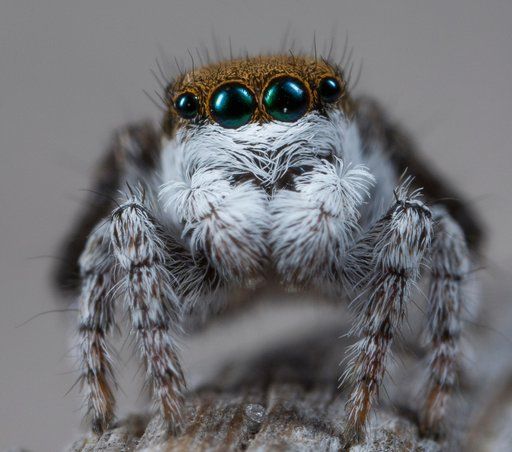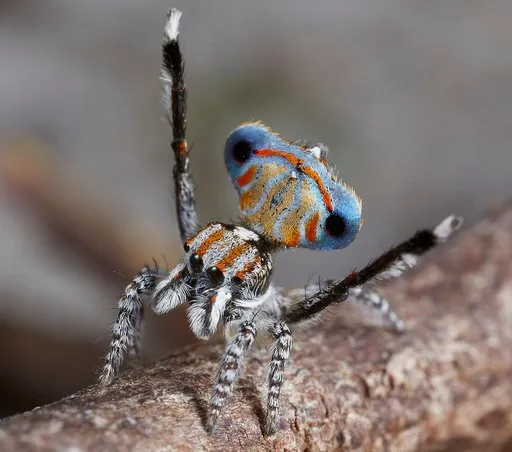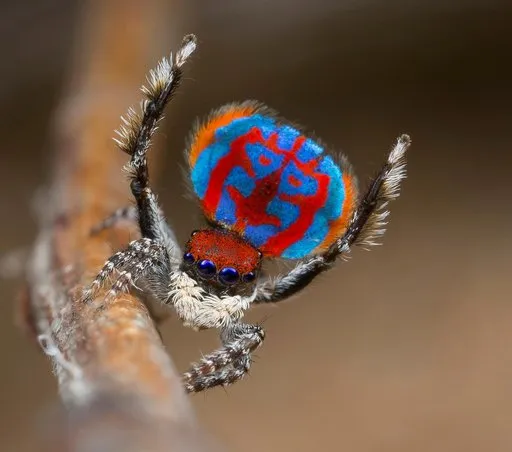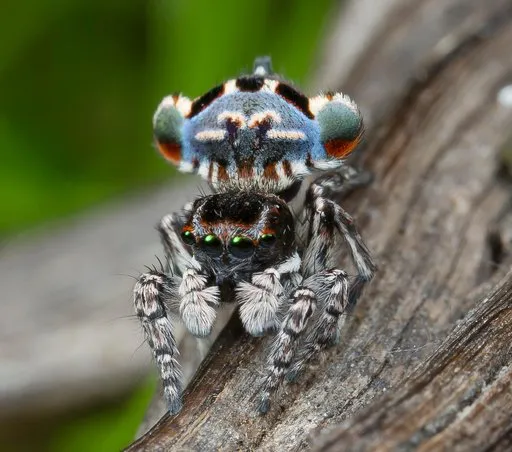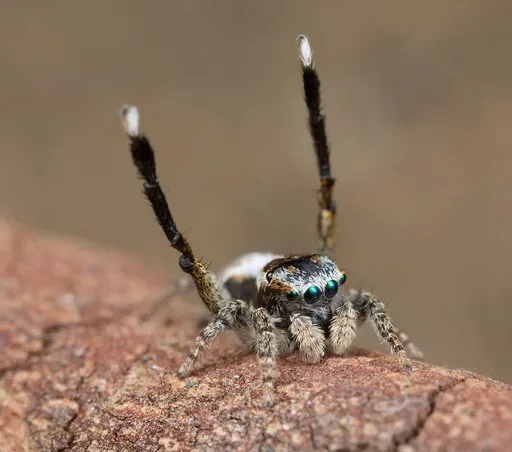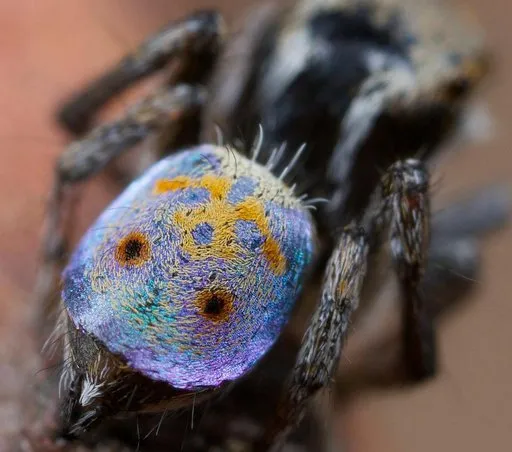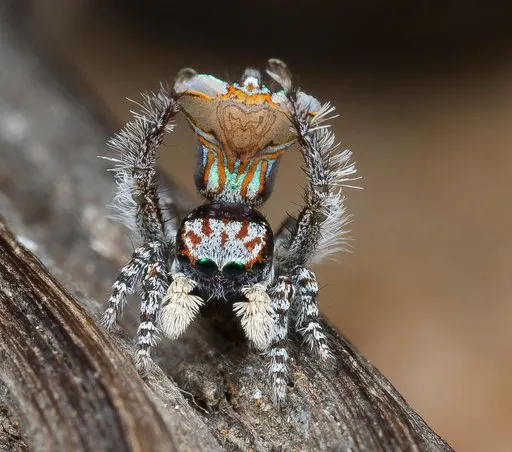Stunning Images Capture Peacock Spiders’ Flashy Colors
Beautiful and acrobatic, these tiny, vibrant creatures shake their tail fuzz in elaborate mating dances
Peacock spiders fall far from most people's definition of a spider. These tiny, colorful creatures are known for their rainbow of hues and their jiggling mating dance moves. Yet until recently, most of their kind has gone unnoticed. But Australian entomologist Jurgen Otto wants to change that.
“These tiny invertebrates are so different to peoples’ experience of spiders, it turns their view upside down,” Jurgen tells Lisa Morrison at Science Network Western Australia. “Now when people think of spiders they might not think of something black and scary and ugly that they are frightened of and want to squish. They might think of something small and cute and colorful and complex—this give[s] the whole spider group a different appeal.”
For almost a decade, Otto has photographed the spiders in the genus Maratus, also known as the peacock spider. These tiny arachnids are found in western and southern Australia and were first described in 1874. But they are so itty bitty—the largest species is about one third of an inch long—that no one paid them much heed for well over a century.
That is until Otto almost stepped on one of the tiny critters while hiking Ku-ring-gai Chase National Park north of Sydney in 2005. When he saw its tail, brilliantly colored like abstract art, he was smitten. Typically, he collects the beautiful arachnids from the bush then drives them to his home in Sydney, where he photographs and records their mating dances in a dedicated “spider room.” He then returns them to the wild, sometimes a 28-hour round trip, reports Siyi Chen at Quartz.
This past May Otto and his collaborator David Hill cataloged another seven of these brilliant gems in the journal Peckhamia. This latest find brings the total number of peacock spider species to 48—a considerable portion of which Otto found himself—with another 16 waiting in the wings to be classified and named.
At his day job, he works for the Australian government as a mite researcher and undertakes his spider research at his own expense, funding this work with his popular Peacock Spiderman YouTube channel, a Facebook page, and a Flickr profile that features hundreds of stunning images of the spiders.
“They’re fairly cute, which is why people are attracted to them,” Otto tells Elle Hunt at The Guardian. “They behave very differently to how people think a spider does ... they behave more like cats and dogs, moving around, perceiving and reacting to their environment.”
The mating dance moves vary from species to species, but in general the males waggle their tails, wave their legs up and down and scuttle back and forth (and if you do some good editing, they even dance to “YMCA”). If they don’t dance their thoraxes off, there’s a chance their unimpressed lady friend may eat them, explains Chen.
Otto was not expecting to find his latest batch of Maratus. In fact, he and Hill travelled to Western Australia looking for previously described species. Instead, the team found Maratus albus, M. bubo, M. lobatus, M. tessellatus, M. vespa, M. voltus and M. australis, reports Morrison. While Otto takes the scientific naming of the spiders seriously, some of their common names are a bit more fanciful, like hokey-pokey, sparklemuffin and skeletorus.
After this exciting find, Otto has high hopes that that there are many more of these charismatic critters yet to capture.
